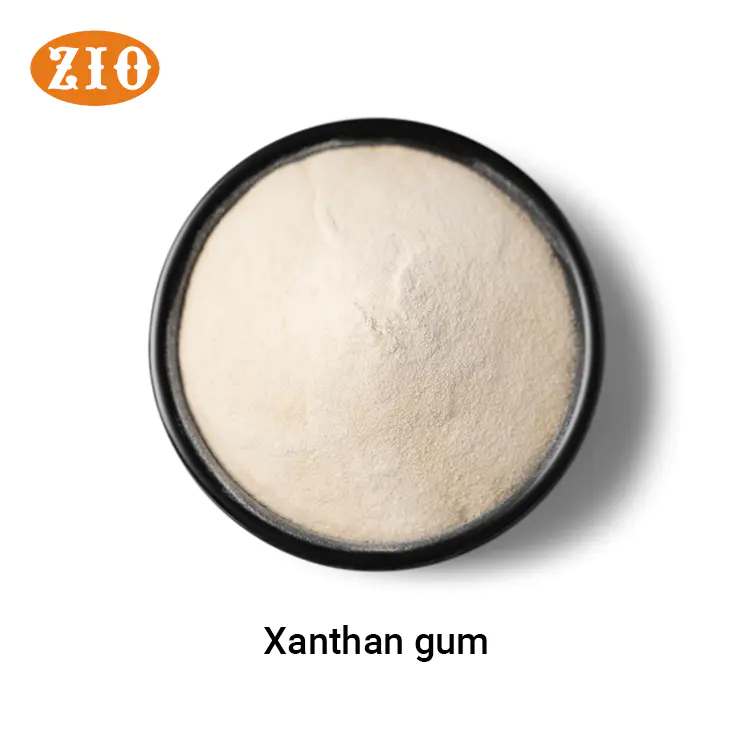

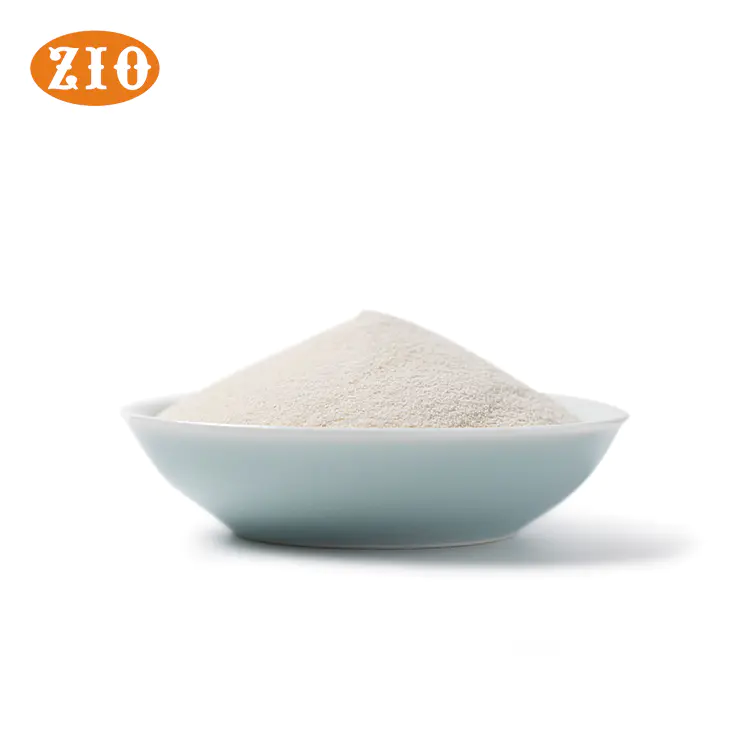
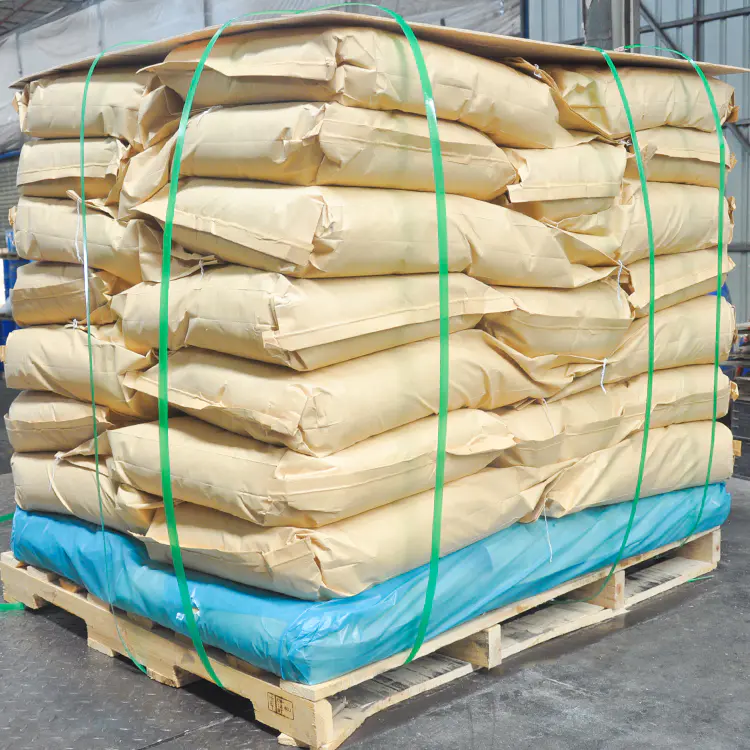
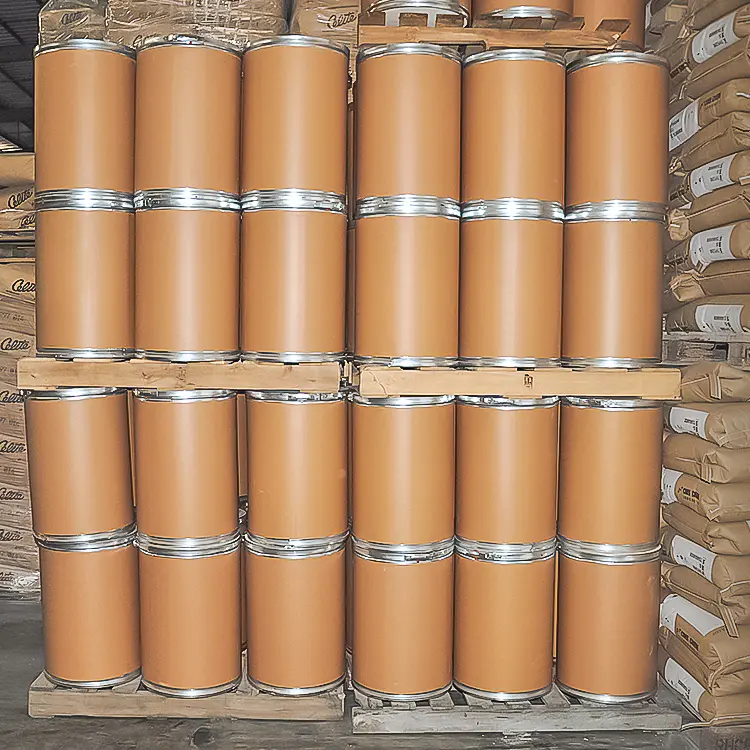
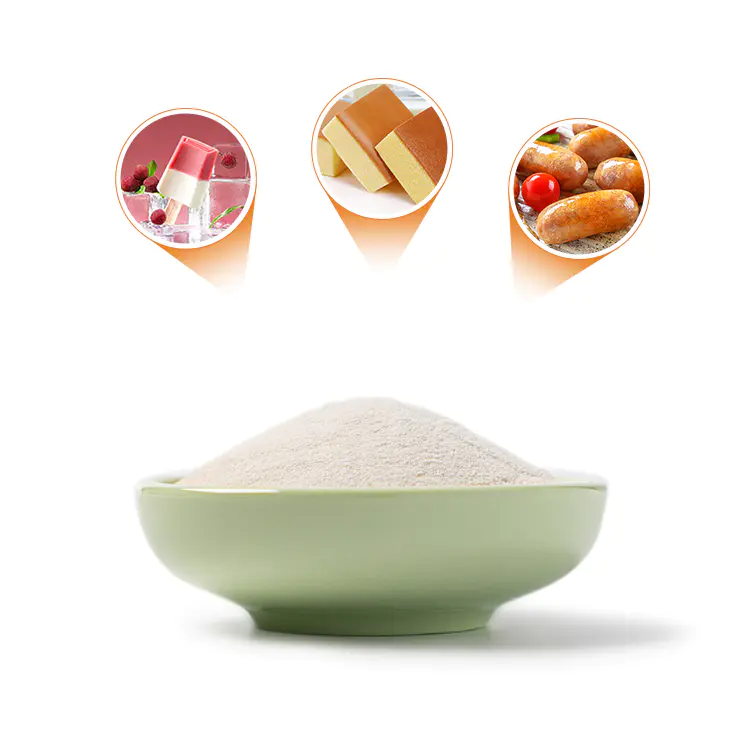
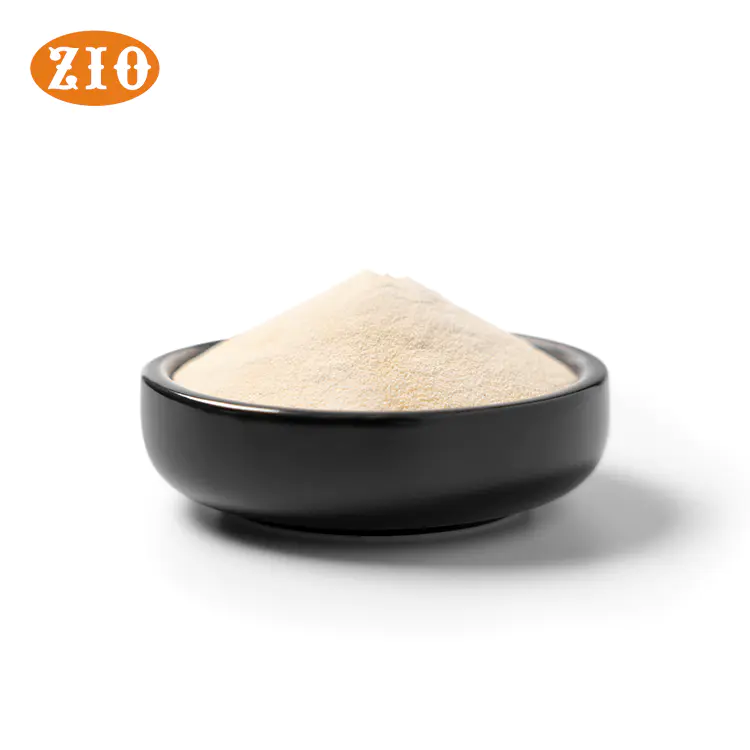
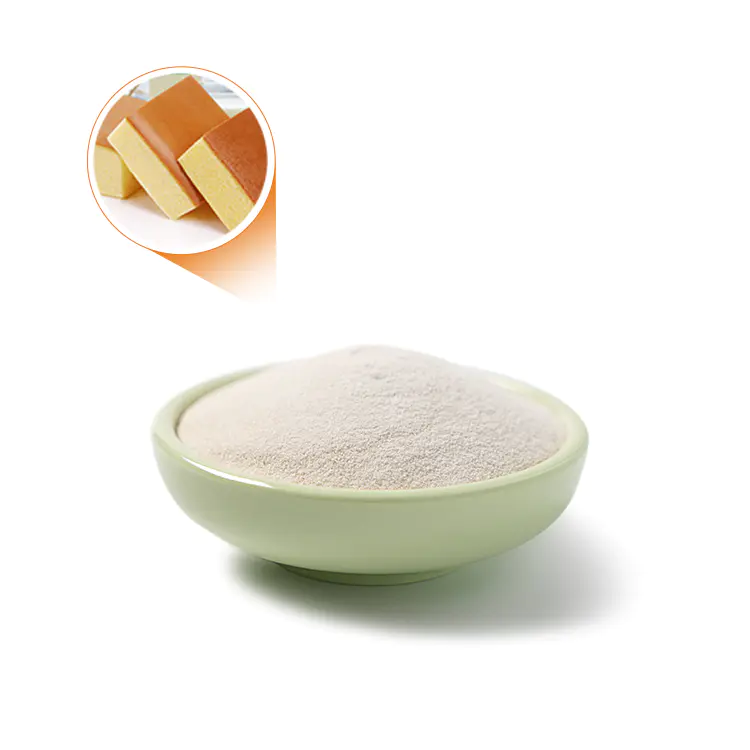
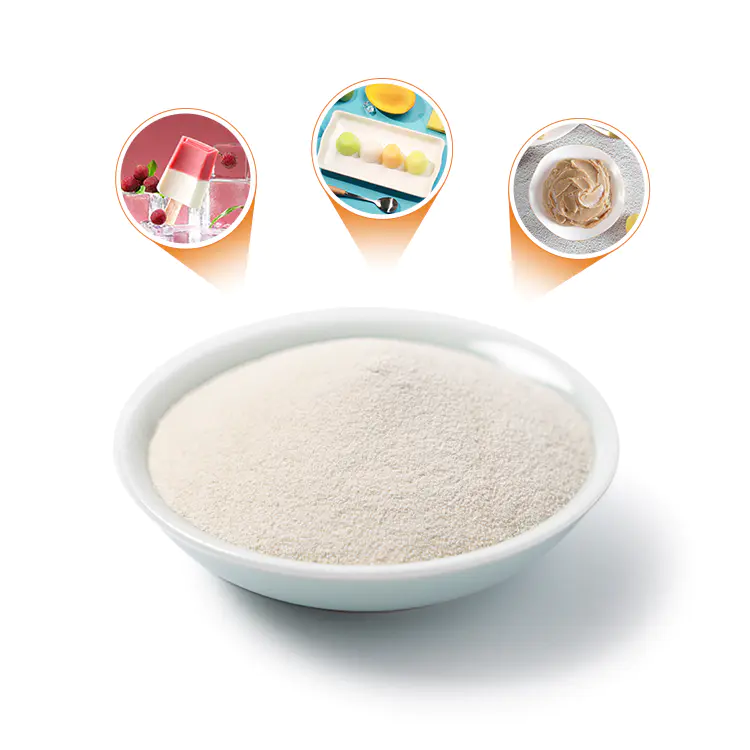
What is Xanthan Gum?
Xanthan gum, also know as Hansheng gum, is a kind of extracellular microbial with a wide range of functions produced by Xanthomnas campestris using carbohydrates as the main raw material (such as corn starch) through fermentation engineering. Polysaccharides. It has unique rheology, good water solubility, stability to heat, acid and alkali, and good compatibility with various salts. As a thickener, suspending agent, emulsifier, and stabilizer, it can be widely used in more than 20 industries such as food, petroleum, medicine, etc., it is currently the largest and most widely used microbial polysaccharide in the world.
Structure
Xanthan gum, also known as xanthan gum and xanthan gum, is an extracellular acidic heteropolysaccharide produced by the fermentation of Xanthomonas spp. It is a polysaccharide polymer compound composed of D-glucose, D-mannose and D-glucuronic acid in a ratio of 2:2:1, with a relative molecular mass of more than 1 million. The secondary structure of xanthan gum is that the side chains are reversely wound around the backbone of the main chain, and are maintained by hydrogen bonds to form a rod-like double helix structure.
Character
Xanthan gum is a light yellow to white flowable powder with a slight odor. Easily soluble in cold and hot water, neutral solution, resistant to freezing and thawing, insoluble in ethanol. Dispersed and emulsified in water to become a stable hydrophilic viscous colloid.
Performance characteristics
Xanthan gum is currently the most superior biological glue in the world, integrating thickening, suspending, emulsifying and stabilizing. The number of pyruvic acid groups contained at the end of the molecular side chain of xanthan gum has a great influence on its performance. Xanthan gum has the general properties of long-chain polymers, but it contains more functional groups than general polymers, and will show unique properties under specific conditions. Its conformation in aqueous solution is diverse and exhibits different properties under different conditions.
1. Suspension and emulsification
Xanthan gum has a good suspending effect on insoluble solids and oil droplets. Xanthan gum sol molecules can form super-bonded ribbon-shaped helical copolymers, forming a fragile glue-like network structure, so they can support the morphology of solid particles, droplets and bubbles, showing strong emulsification stability and high suspension ability.
2. Good water solubility
Xanthan gum dissolves quickly in water and has good water solubility. In particular, it can be dissolved in cold water, which can save complicated processing and is easy to use. However, due to its strong hydrophilicity, if water is directly added without sufficient stirring, the outer layer will absorb water and swell into micelles, which will prevent water from entering the inner layer, thus affecting the performance of the function, so it must be used correctly. Xanthan gum dry powder or dry powder accessories such as salt and sugar are mixed well and then slowly added to the stirring water to make a solution for use.
3. Thickening
Xanthan gum solution has the characteristics of low concentration and high viscosity (the viscosity of 1% aqueous solution is 100 times that of gelatin), and it is an efficient thickener.
4. Pseudoplasticity
The aqueous solution of xanthan gum has high viscosity under static or low shear action, and shows a sharp drop in viscosity under high shear action, but the molecular structure remains unchanged. When the shear force is removed, the original viscosity is restored immediately. The relationship between shear force and viscosity is completely plastic. The pseudoplasticity of xanthan gum is very prominent, and this pseudoplasticity is extremely effective for stabilizing suspensions and emulsions.
5. Thermal stability
The viscosity of xanthan gum solution will not change greatly with the change of temperature. General polysaccharide will have viscosity change due to heating, but the viscosity of xanthan gum solution will hardly change between 10-80℃, even if the concentration is low The aqueous solution still shows stable high viscosity in a wide temperature range. 1% xanthan gum solution (containing 1% potassium chloride) was heated from 25 ℃ to 120 ℃. Its viscosity is reduced by only 3%.
6. Stability to acid and alkali
Xanthan gum solution is very stable to acid and alkali, and its viscosity is not affected when the pH is between 5 and 10. When the pH is less than 4 and greater than 11, the viscosity changes slightly. In the range of PH3-11, the difference between the maximum and minimum viscosity is less than 10%. Xanthan gum can be dissolved in a variety of acid solutions, such as 5% sulfuric acid, 5% nitric acid, 5% acetic acid, 10% hydrochloric acid and 25% phosphoric acid, and these xanthan gum acid solutions are quite stable at room temperature, The quality has not changed for several months. Xanthan gum is also soluble in sodium hydroxide solution and has thickening properties. The resulting solution is quite stable at room temperature. Xanthan gum can be degraded by strong oxidants, such as perchloric acid and per sulfuric acid, and the degradation is accelerated with the increase of temperature.
7. Stability to salt
Xanthan gum solution is miscible with many salt solutions (potassium, sodium, calcium, magnesium, etc.), and its viscosity is not affected. At higher salt concentrations, its solubility is maintained without precipitation and flocculation even in saturated salt solutions, and its viscosity is hardly affected.
8. Stability to enzymatic hydrolysis
The stable double helix structure of xanthan gum makes it have strong anti-oxidation and anti-enzymatic hydrolysis ability, and many enzymes such as protease, amylase, cellulose and hemicellulose cannot degrade xanthan gum.
The main purpose
Due to its unique properties, xanthan gum has an extremely wide range of applications in more than a dozen fields such as food, petroleum, medicine, and daily chemicals. Its high degree of commercialization and wide application range make any other microbial polysaccharide All out of reach.
1. Food: Xanthan gum is added to many foods as a stabilizer, emulsifier, suspending agent, thickener and processing aid. Xanthan gum can control the rheology, structure, flavor and appearance of products, and its pseudoplasticity can ensure good taste, so it is widely used in salad dressings, bread, dairy products, frozen food, beverages, condiments, brewing, In candies, pastries, soups and canned foods. In recent years, people in more developed countries often worry that the calorific value in food will be too high and make themselves fat. Xanthan gum dispels this concern because it cannot be directly degraded by the human body. In addition, according to a report in Japan in 1985, a comparative test of eleven food additives, xanthan gum is the most effective anticancer agent among them.
2. Daily chemical industry: Xanthan gum contains numerous hydrophilic groups in the molecule, which is a good surface-active substance and has the functions of anti-oxidation and preventing skin aging. Therefore, almost most high-end cosmetics contain It uses xanthan gum as its main functional ingredient. In addition, xanthan gum can also be used as a component of toothpaste to substantially thicken and shape, reducing tooth surface wear.
3. Medical aspects: Xanthan gum is a functional component in the currently hot international microcapsule drug capsules and plays an important role in controlling the sustained release of drugs; due to its strong hydrophilicity and water retention, there are many more. The application of specific medical operations, such as the formation of a dense water film to avoid skin infections; reducing the thirst of patients after radiotherapy, etc. In addition, Dr. Li and Dr. Xu once wrote that xanthan gum itself can significantly enhance the humoral immune function of mice.
4. Applications in industry and agriculture: In the petroleum industry, due to its strong pseudoplasticity, low-concentration xanthan gum (0.5%) in aqueous solution can maintain the viscosity of the drilling fluid and control its rheological properties. Minimal viscosity at the site saves power; high viscosity is maintained at relatively static borehole sites to prevent well bore collapse. And because of its excellent salt resistance and heat resistance, it is widely used in drilling in special environments such as oceans and high-salt formations.

